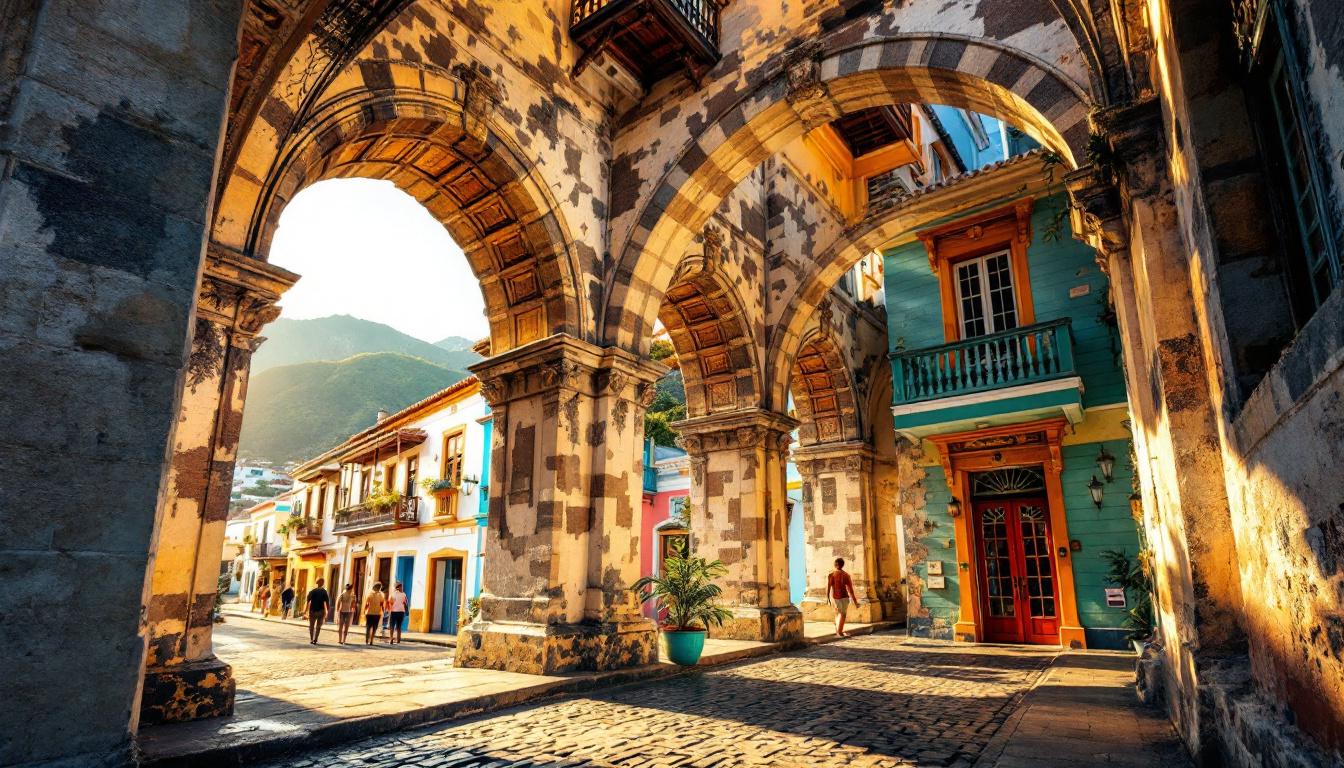Imagine a Caribbean capital where colonial arches frame vibrant street scenes and centuries-old churches stand sentinel over a bustling harbor. Kingstown, nicknamed the “City of Arches,” isn’t just St. Vincent and the Grenadines’ administrative center—it’s a living museum where Georgian, Moorish, and French colonial architecture creates one of the most distinctive urban landscapes in the Caribbean.
A forgotten colonial treasure frozen in time
Walking Kingstown’s cobblestone streets feels like stepping through a time portal. The city’s remarkable preservation of 18th and 19th-century architecture stems from economic shifts that left many buildings untouched by modernization. Weathered stone arches support upper floors of merchants’ houses, while intricate wooden balconies with gingerbread trim create geometric shadows across building facades.
“Our architectural heritage tells stories that history books cannot,” explains Dr. Marlon Adams, curator at the National Trust. “Each arch, each wooden shutter represents a chapter in our complex colonial past.”
The sacred triangle: Three churches, three centuries
Within a half-mile triangle sit three remarkable churches representing different eras. St. George’s Anglican Cathedral (1820) features distinctive twin spires and remarkable stained glass, while St. Mary’s Catholic Cathedral showcases a bell tower offering panoramic harbor views. The Methodist Church, with its distinctive Georgian symmetry, completes this architectural trinity that draws architecture enthusiasts from around the world.
Fort Charlotte: Where colonial power meets Caribbean views
Perched 601 feet above sea level, Fort Charlotte offers the island’s most spectacular vantage point. Built between 1763 and 1806, this British fortification once housed 600 troops and 34 cannons aimed at both foreign invaders and potential slave uprisings. Today, its stone ramparts frame breathtaking views of the Grenadines archipelago stretching toward Grenada’s silhouette on clear days.
The oldest botanical gardens in the Western Hemisphere
Established in 1765, Kingstown’s Botanical Gardens predates American independence. The gardens’ crown jewel is a breadfruit tree descended from saplings brought by Captain William Bligh (of “Mutiny on the Bounty” fame) in 1793. Royal palm avenues create natural cathedral-like spaces, while endemic plants showcase biodiversity that rivals more famous tropical destinations.
Where market life pulses with island rhythms
Saturday mornings transform Kingstown’s market district into a sensory feast. Produce vendors arrange golden mangoes and fire-engine-red scotch bonnet peppers in geometric displays, while fishmongers present the day’s catch on beds of crushed ice. The market’s energy rivals any festival, with impromptu calypso performances and the animated haggling that locals call “sweet mouth talk.”
“Our market carries the authentic soul of Vincentian culture,” says Marva Samuel, who has sold produce here for 43 years. “Tourism hasn’t changed us—we’re still the heart of island life.”
Beyond Kingstown: Island gems waiting to be discovered
While Kingstown captivates with colonial charm, it’s also the gateway to exploring St. Vincent’s natural wonders. The La Soufrière volcano offers challenging hikes to its 4,049-foot summit, while Dark View Falls showcases twin cascades accessible via a bamboo bridge. For gem enthusiasts, the island offers experiences comparable to northern treasure hunts but with tropical weather.
When the pace of exploration demands relaxation, consider island-hopping to the Grenadines, where pristine beaches and yacht-filled harbors offer Caribbean luxury without crowds.
Kingstown represents Caribbean history preserved not as a museum piece but as a living community. Its cobblestone streets and colonial arches frame a vibrant culture where past and present dance together daily—a rare authenticity increasingly difficult to find in our homogenized world.
